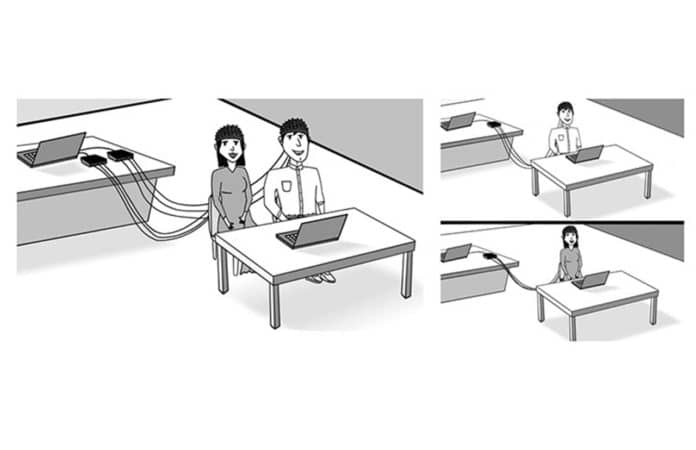According to a new study by the Nanyang Technological University, Singapore (NTU Singapore), the physical presence of spouses enhances brain-to-brain synchrony in co-parenting couples.
The study involved 24 pairs of husband and wife from Singapore. Scientists examined how the presence of a co-parenting spouse influences brain-to-brain synchrony when attending to salient infant and adult vocalizations. They found that brain-to-brain synchrony would be greater in the presence of a spousal partner.
Scientists used functional Near-infrared Spectroscopy (fNIRS) to monitor the prefrontal cortex, an area of the brain which is associated with complex behavior and emotional states.
Before the experiment, the couples answered a questionnaire that aims to quantify how often the mother or father takes the lead in co-parenting. The couples were then exposed to infant and adult laughter and cries, as well as a static sound either together (in the same room at the same time) or separately (in different rooms at different times).
They found that when spouses were physically together, they showed higher similarities in brain responses to the stimuli than when they were separated. This effect was only found in true couples and not in randomly matched study participants.
The senior author of the study, NTU Associate Professor Gianluca Esposito, who holds a joint appointment in the School of Social Sciences and the Lee Kong Chian School of Medicine, said, “Our study indicates that when spouses are physically together, there is greater synchrony in their attentional and cognitive control mechanisms when parenting.”
“Since the presence of the spouse may shape the brain response of parents, then it is likely that spouses who do not spend much time together while attending their children may find it harder to understand each other’s viewpoint and have reduced ability to coordinate co-parenting responsibilities. This may undermine the quality of parental care in the long run.”
Assoc Prof Esposito, who also leads the Social and Affective Neuroscience Lab (SAN-Lab) at NTU, said, “more time together while attending a child may seem a “waste of time.” However, it may prove to help the couple with parenting.”
“This finding is particularly useful for parents who are working from home during this “circuit breaker” period, as families spend more time together at home as part of social distancing measures in the fight against COVID-19. The entire family interacting together for an extended period may be stressful. Still, parents can take this time to tune into each other’s behavior and emotions while caring for their children.”
The paper’s first author Ms. Atiqah Azhari, an NTU Ph.D. candidate at the SAN-Lab said, “Our study brings us a step closer in uncovering how the parental brain may be shaped by the physical presence of the co-parenting spousal partner.”
The paper’s co-first author Ms. Mengyu Lim, who is a Project Officer at the SAN-Lab at NTU, said, “The findings of this study may be empowering for those who experience parenting stress – that we should not think of parenting as an individual task, but a shared responsibility with the spouse. Co-parenting requires active teamwork, communication, and trust in each other.”
Journal Reference:
- Atiqah Azhari, the Physical presence of a spouse, enhances brain-to-brain synchrony in co-parenting couples. DOI: 10.1038/s41598-020-63596-2
